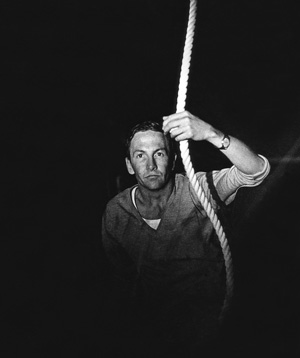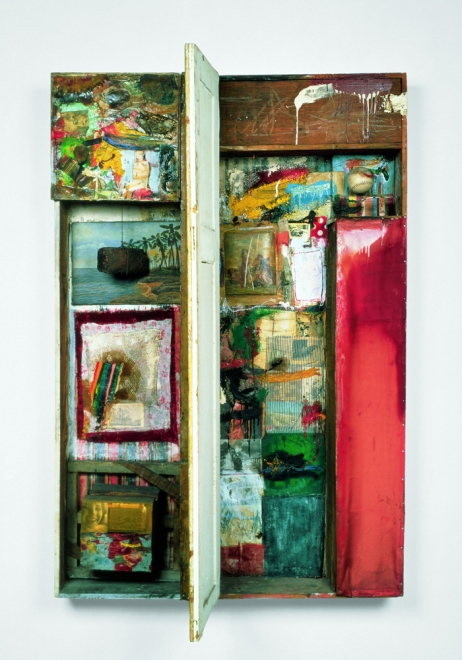
The image is from "5 New York Evenings"
which was held at Moderna Museet in September 1964
Photo: Stig T Karlsson

Collection

Coca-Cola Plan

Untitled

Minutiae
It is no exaggeration to say that Rauschenberg redefined American art when he invented the Combine. With these works he exploded the traditional boundary between painting and sculpture, and instead brought the street into the studio. Rauschenberg resumed the dialogue with the outer world that the preceding artist generation, the abstract expressionists, had consistently excluded from their art. The 162 combines he created during a ten-year period also demonstrate his influence on later isms and genres, such as pop art, neo-dada, assemblage, fluxus, Viennese actionism, arte povera and performance art.
Robert Rauschenberg (originally Milton) was born in Port Arthur, Texas, in 1925. After studying pharmacology at the University of Texas he was drafted into the Navy and spent many years caring for mental patients at various Navy hospitals in California. He started painting portraits of his fellow navy recruits that they could send back home to their families. In the late 1940s, he studied at Kansas City Art Institute and at Academie Julian in Paris, where he met the artist Susan Weil, whom he married shortly after. Rauschenberg went on to study at Black Mountain College in North Carolina, where the famous artist and Bauhaus teacher Joseph Albers was on the staff. It was at Black Mountain that Rauschenberg forged his seminal friendship with the avant-garde choreographer and dancer Merce Cunningham and the legendary composers John Cage and David Tudor. It was there, also, that he participated in Cage's Theater Piece #1 which is now considered to be the world's first happening. Robert Rauschenberg currently lives in Captiva in Florida.

Interview